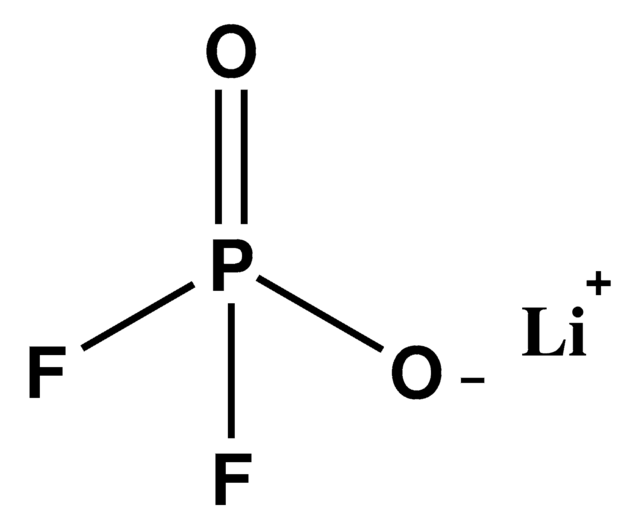935832
Lithium bis(fluorosulfonyl)imide
99.9% trace metals basis, battery grade
Sinônimo(s):
"Imidodisulfuryl fluoride, lithium salt", Ionel LF 101, LiFSI, Lithium bis(fluorosulfonyl)amide, Lithium bis(fluorosulfonyl)imido, Lithium imidodisulfuryl fluoride
About This Item
Produtos recomendados
grau
battery grade
Nível de qualidade
descrição
Application: Battery manufacturing
Ensaio
99.9% trace metals basis
forma
powder
características do produto alternativo mais ecológico
Design for Energy Efficiency
Learn more about the Principles of Green Chemistry.
sustainability
Greener Alternative Product
pf
140 °C
traços de ânion
chloride (Cl-): ≤5 ppm
sulfate (SO42-): ≤10 ppm
traços de cátion
K: ≤10 ppm
Na: ≤5 ppm
aplicação(ões)
battery manufacturing
categoria alternativa mais ecológica
cadeia de caracteres SMILES
FS([N-]S(F)(=O)=O)(=O)=O.[Li+]
InChI
1S/F2NO4S2.Li/c1-8(4,5)3-9(2,6)7;/q-1;+1
chave InChI
VDVLPSWVDYJFRW-UHFFFAOYSA-N
Procurando produtos similares? Visita Guia de comparação de produtos
Categorias relacionadas
Descrição geral
Aplicação
produto relacionado
Palavra indicadora
Danger
Frases de perigo
Declarações de precaução
Classificações de perigo
Acute Tox. 4 Oral - Eye Dam. 1 - Muta. 2 - Skin Irrit. 2
Código de classe de armazenamento
11 - Combustible Solids
Classe de risco de água (WGK)
WGK 3
Ponto de fulgor (°F)
Not applicable
Ponto de fulgor (°C)
Not applicable
Certificados de análise (COA)
Busque Certificados de análise (COA) digitando o Número do Lote do produto. Os números de lote e remessa podem ser encontrados no rótulo de um produto após a palavra “Lot” ou “Batch”.
Já possui este produto?
Encontre a documentação dos produtos que você adquiriu recentemente na biblioteca de documentos.
Nossa equipe de cientistas tem experiência em todas as áreas de pesquisa, incluindo Life Sciences, ciência de materiais, síntese química, cromatografia, química analítica e muitas outras.
Entre em contato com a assistência técnica









